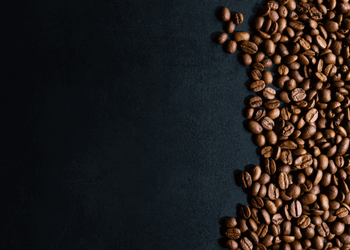
History (and Origins) of Pour-Over Coffee Makers

Have you ever stepped into a specialty coffee shop and noticed those sleek pour-over coffee devices? You know, the ones like the V60 and Chemex that have become total icons of the third-wave coffee movement?
Well, let me tell you, there's more to these simple methods than meets the eye. Join us on a journey where we uncover the captivating history of pour-over coffee!
Pour-over history: How the journey started
You might be thinking that a brewing method as simple as pouring hot water over coffee grounds wouldn't have much of a story behind it. But trust us, you'd be surprised!
We're going way back to a time when folks were making coffee by tossing ground coffee into pots with water and calling it a day. That's how it went in Saudi Arabia and Turkey, and hey, it did the job.
But then, around 1810, the percolator burst onto the scene – a nifty little device that continuously circulated boiling brew through the grounds. It became all the rage in Europe and was the go-to method for brewing a perfect cup of coffee.
And just when you thought things couldn't get any better, bam! The espresso machine came strutting its stuff.
But wait, we're not quite there yet. We're about to meet the real hero of our pour-over tale. Fast forward to 1908 and say hello to Amalie Auguste Melitta Bentz. You see, Amalie was a woman on a mission.
She was fed up with the lackluster flavor from her percolator and those pesky coffee grounds floating in her cup. So, she put on her thinking cap and started tinkering away.
After a bit of trial and error, Amalie came up with a genius technique. She grabbed some blotting paper, punctured a can with a nail, and voila! The birth of the pour-over coffee method as we know it.
Her brews were less bitter and delightfully free of any grounds, and she knew she was onto something special.
Amalie wasted no time and filed a patent for her paper filter invention, and just like that, the Melitta company was born. Melitta's brilliant invention opened the floodgates to endless possibilities in the world of pour-over coffee.
Development of the pour-over coffee maker
Following Melitta Bentz's breakthrough, the pour-over coffee maker underwent continuous evolution, resulting in a range of brewers that cater to various preferences and brewing styles. Let's explore some notable milestones in the history of pour-over:
In the 1940s, the Chemex pour-over brewer emerged, designed by Dr. Peter Schlumbohm. Its elegant hourglass shape, wooden collar, and thick paper filters became iconic, both for its design excellence and the clean, crisp brew it produced. The Chemex remains an iconic pour-over brewer to this day.
Fast forward to the 1950s, when the Hario V60 pour-over brewer was introduced in Japan. Its conical shape, spiral ridges, and large single hole allowed for optimal extraction and control over the brewing process. The Hario V60 gained a cult following for its versatility and the mesmerizing ritual it offered.
Technological integration has also influenced pour-over brewing. The release of the December Dripper in recent years introduced a pour-over brewer with an adjustable flow rate controlled by a valve. This innovation allowed users to fine-tune the extraction process and experiment with different brewing techniques.
The development of pour-over brewers has showcased the ingenuity and passion of coffee enthusiasts, leading to an array of options tailored to individual preferences and brewing styles. From the invention of the paper filter by Melitta Bentz to the introduction of iconic brewers like Chemex and Hario V60, the history of pour-over coffee makers is quite fascinating. Pour-over brewers have continuously evolved to deliver a personalized and exceptional coffee experience.
Evolution and modern innovations of pour-over brewer
1) Japanese pour-over (Hario V60)
First up, we have the Japanese marvel known as the Hario V60. This little beauty stands out with its eye-catching conical shape and those spiral ribs nestled inside.
These ribbed walls play a crucial role in guiding the hot water and coffee grounds as they work their magic, resulting in a cup of coffee bursting with flavor and aromas.
What sets the V60 apart is its ability to give you ultimate control over the brewing process. You can fine-tune the water temperature, brewing time, and coffee-to-water ratio to create your own personalized and perfectly extracted brew.
2) Dutch pour-over (Chemex)
Next, we have the iconic Chemex Coffeemaker, invented back in 1941 by the brilliant German chemist Peter Schlumbohm. This sleek and elegant hourglass-shaped brewing device brings a touch of sophistication to your coffee routine.
What makes Chemex unique is its use of bonded paper filters. These filters, a tad thicker than your average pour-over filters, work wonders by ensuring a cleaner cup of coffee with fewer sediments and oils.
But it's not just about aesthetics and cleanliness—the Chemex is a practical powerhouse too. Its design allows you to brew large batches of coffee, making it a go-to choice for gatherings or those mornings when a single cup just won't cut it.
3) German pour-over (Melitta)
The German pour-over brewer, named after its inventor Melitta Bentz, is known for its simplicity and reliability. It consists of a cone-shaped brew basket that holds the coffee filter and rests on top of a carafe or mug.
The Melitta pour-over brewer offers a straightforward brewing method that consistently produces a smooth and well-balanced cup of coffee. It is available in various sizes and materials, including ceramic and plastic, catering to different preferences.
4) Colombian pour-over (Café de Olla)
Café de Olla is a traditional Colombian pour-over variation that showcases the country's vibrant coffee culture. It involves brewing coffee in clay pots called "ollas" and infusing it with spices like cinnamon and cloves.
The clay pots and spices impart unique flavors to the coffee, resulting in a rich and aromatic brew that reflects the traditional Colombian coffee experience. Café de Olla has gained popularity for its cultural significance and the depth of flavors it brings to the cup.
Pour-over popularity in home coffee brewing
Pour-over brewing has gained significant popularity among home coffee brewers. The process allows for a hands-on and immersive coffee experience, enabling individuals to tailor their brew to their preferences. It's simplicity and minimal equipment requirements make it accessible to coffee enthusiasts of all levels.
Pour-over brewing also offers the opportunity to experiment with different coffee beans, grind sizes, and pouring techniques, allowing homebrewers to explore and refine their brewing skills.
The trend of specialty coffee and the desire for personalized coffee experiences have further contributed to the popularity of pour-over brewing at home. As a result, more and more coffee lovers are adopting pour-over as their go-to method for brewing a delicious cup of coffee in the comfort of their own homes.
Wrapping up
As we sip our perfectly brewed pour-over coffee, let's appreciate the rich history of pour-over that brought this simple yet extraordinary method to our cups.
It reminds us that even in the pursuit of something as seemingly simple as pouring water over coffee grounds, there is room for innovation, creativity, and a deep love for the perfect cup of coffee.
So, let's raise our mugs to the inventors, pioneers, and coffee enthusiasts who have shaped the history of pour-over coffee makers and continue to fuel our passion for exceptional coffee experiences.

I am a coffee aficionado based in Seattle. I have devoted my passion and expertise to perfecting the art of home coffee brewing. I became known for my exquisite pour-over and espresso creations. I source coffee beans from local roasters and explores ...



